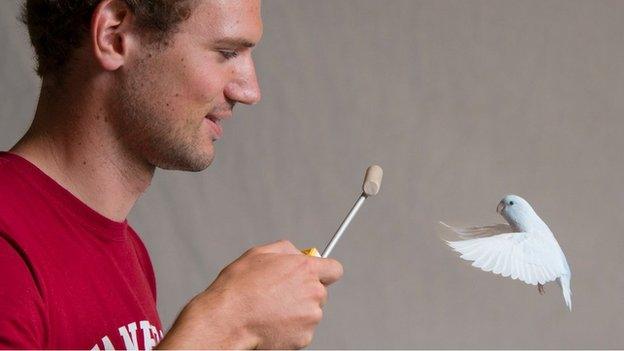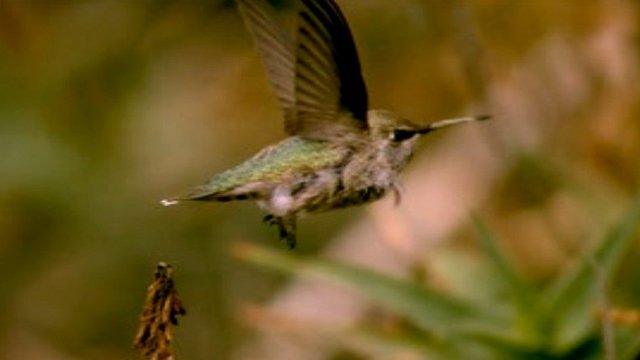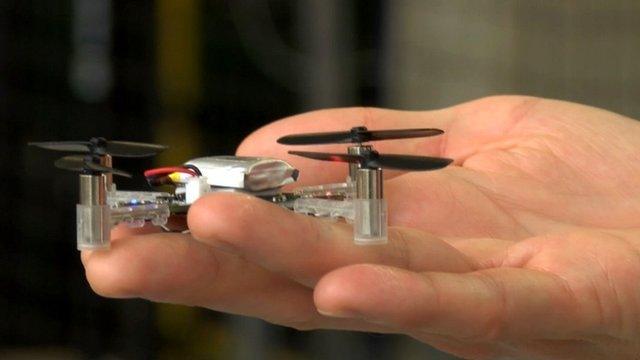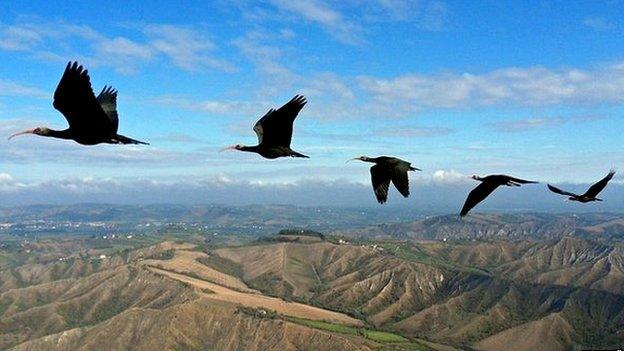Riddle of flying bird's weight solved by scientists
- Published

The scientists trained birds to fly towards a perch inside the device
Scientists at Stanford University in the US have developed a super-sensitive device that can measure the weight of a bird in flight.
The invention, created by Prof David Lentink's research team, measures the force produced by every wing flap.
The device, described in the Royal Society journal Interface, external, will enable researchers to carry out tests of miniature drones, to assess more precisely their flight performance.
It has also answered a physics riddle.
This question, Prof Lentink explained, is whether a container or a truck carrying birds changes in weight when the birds inside were flying.
It was investigated in an episode of the US television show MythBusters; the presenters weighed a trailer while birds flew inside it, and concluded that it was no different to when the birds were still.
This new device, however, is so precise, that it shows that this is not quite right; the weight of the container would actually change as the birds flapped their wings.
The Stanford team explained that measurements taken from a single bird showed that hovering created "double the lift during the downstroke [of the wings] so that the birds did not have to lift their weight during the upstroke".
Researchers developed a special enclosure to measure the tiny forces from every beat of a bird's wings
"So, the weight of a truck containing just a few flying birds will fluctuate in time; only the lift of an incoherent flock of birds could cancel out [this change]," Prof Lentink summarised.
He and his colleagues tested their new device by recording the tiny forces from a single bird flying inside the specially designed chamber.
For their demonstration, the scientists trained two Pacific parrotlets (named Gaga and Ray) to fly from one perch to another inside the device.
The birds would receive a food reward "and we get its aerodynamic forces in return", explained Prof Lentink.
"The method is extremely fast and precise, which helps us measure the forces animals and drones generate to manoeuvre."
By measuring these forces so accurately, Prof Lentink explained, researchers will be able to fine-tune miniature drones as they fly freely inside the chamber.
- Published30 July 2014

- Published23 May 2014

- Published16 January 2014
